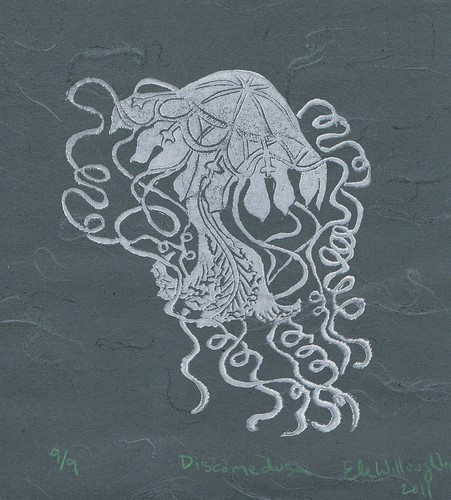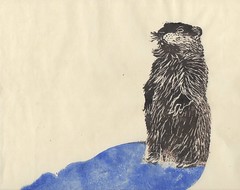
Ah yes, September. When the nights get cooler and thoughts naturally turn to ... Groundhog Day. That's right. This might seem an unseasonable offering (
winter is coming), but, you see, I like Groundhog Day because it's perfectly absurd. Here we are in our allegedly modern country, prognosticating weather by harassing
celebrity rodents (
Wiarton Willie,
Shubenacadie Sam,...). Further, this is Canada. Unless you live in Victoria (and possibly Vancouver), if it's February 2, you don't need a groundhog to tell you there will be 6 more weeks of winter.* If you live south of the border, anywhere near the most famous American prognosticating groundhog,
Punxsutawney Phil, the same is true. Shadow or no shadow, winter ain't over on the 2
nd of February.
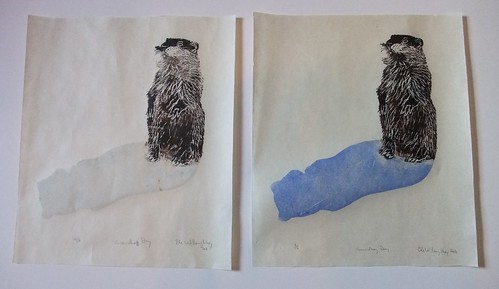
Every year, I write something for Groundhog Day. Every year, I think I should make a print for the occasion, but I never do in time. Well, I got the jump on 2012. These are two copies of a block print of a groundhog - and his shadow - on Japanese kozo paper 11" by 12.5" (28 cm by 31.8 cm). The shadow is printed with thermochromic ink, so when heated it disappears! Whether the groundhog can see his shadow is determined by temperature. The cool blue state and hot colourless state are both shown. So the print itself serves as a prognosticating groundhog for Groundhog Day! If the shadow is heated above 30
oC (86 F) then it turns colourless. And let's face it; if it's February 2, and your artwork is > 30
oC (86 F) you either a) live in the tropics north of the equator b) live in the Southern Hemisphere or c) need to turn the thermostat down ASAP. So, there's a pretty good chance that this print can
accurately predict that there will not be 6 more weeks of winter (to a degree of accuracy at least comparable to any celebrity rodent).
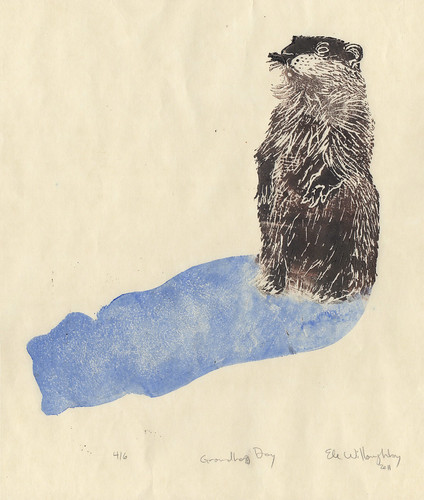
I bet you thought I would try to sneak in the word 'prognosticating' again.
*Conversely, if you live on the left coast, and there are crocuses coming up in your garden, you do not need a celebrity rodent's shadow to give you leave to laugh at the blizzards to the east of you.

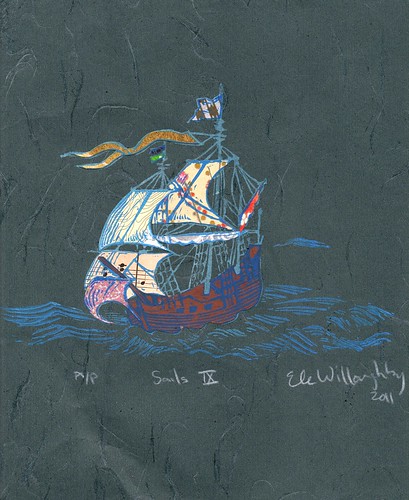
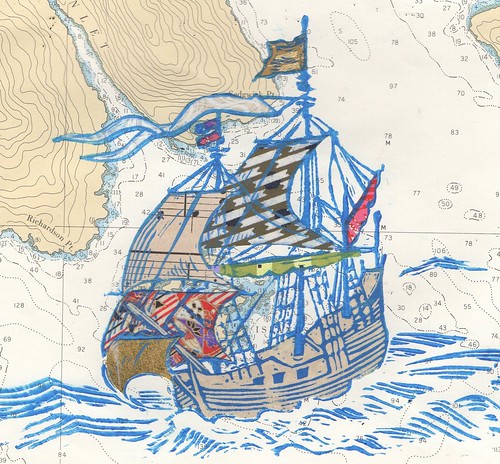



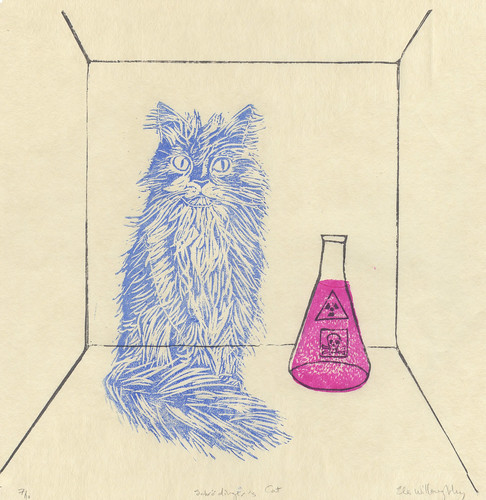
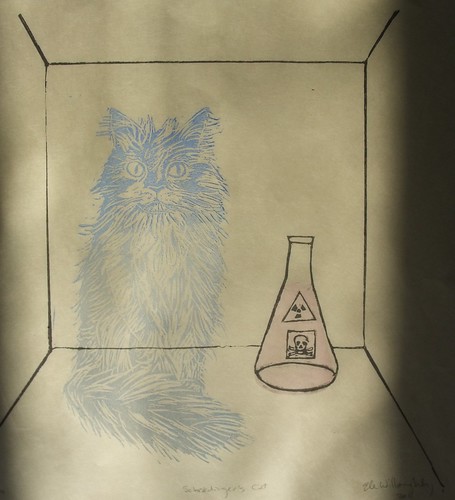
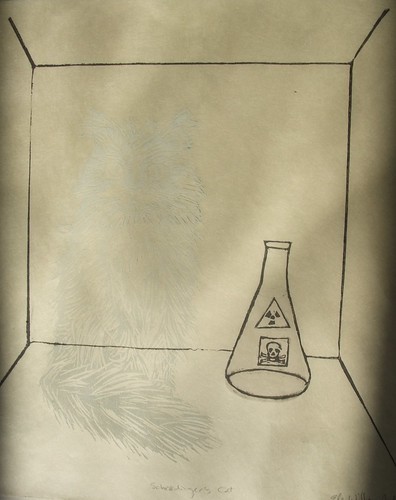

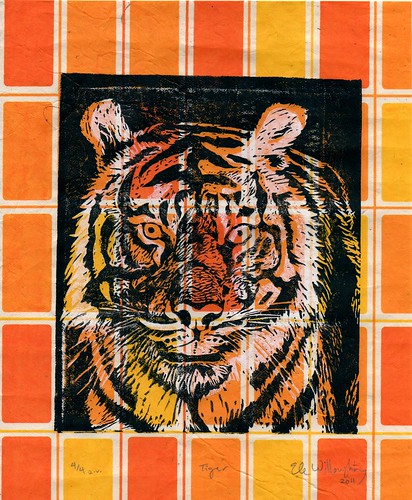
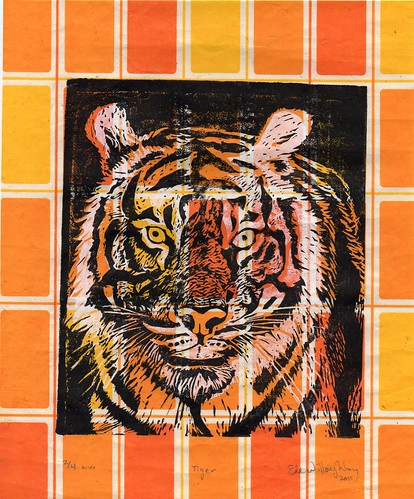
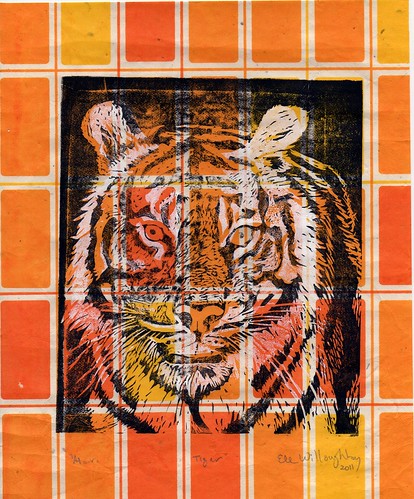
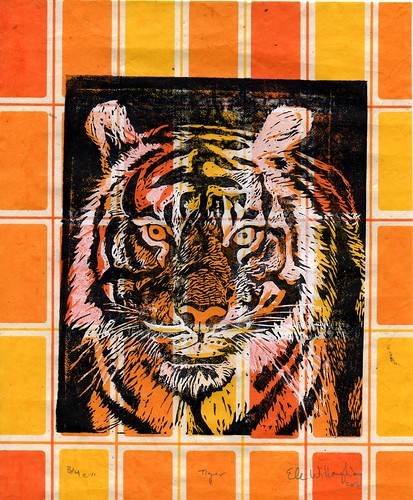
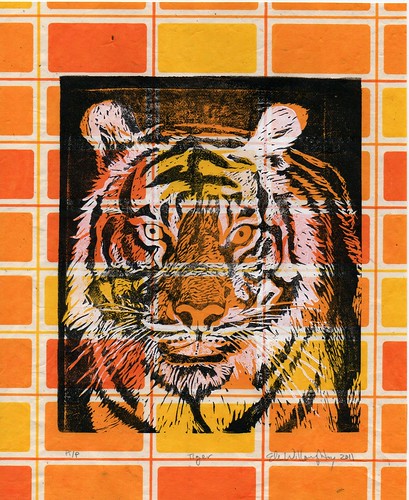

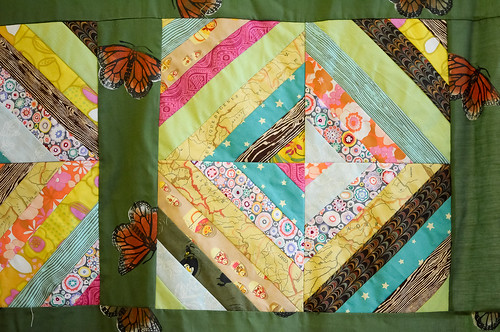
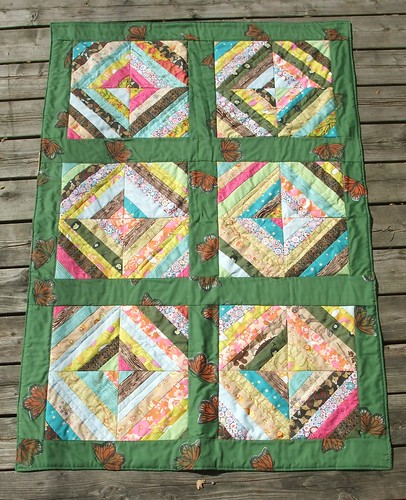
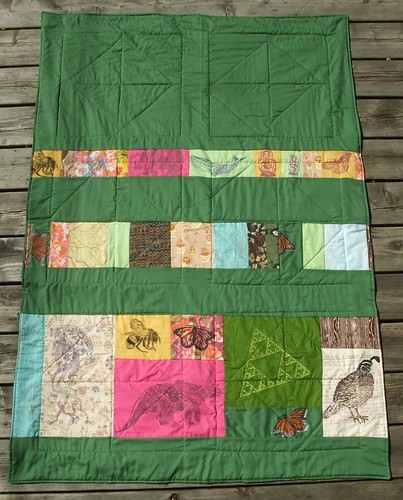
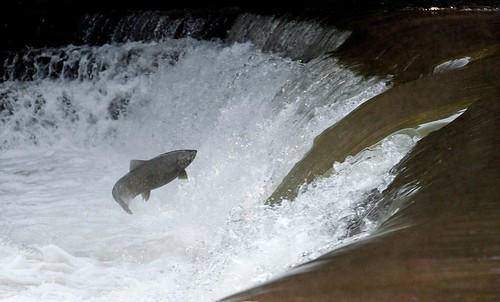
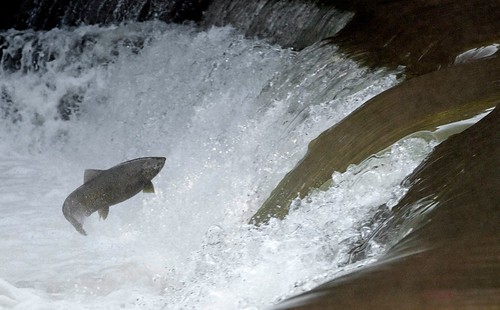
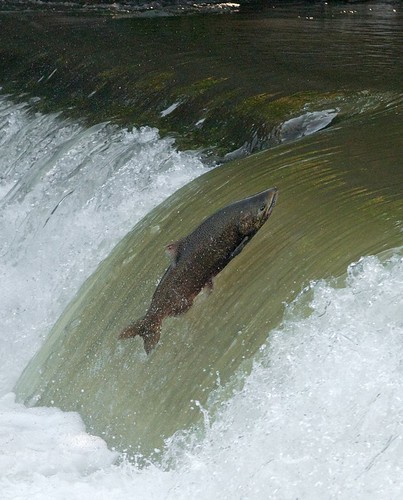
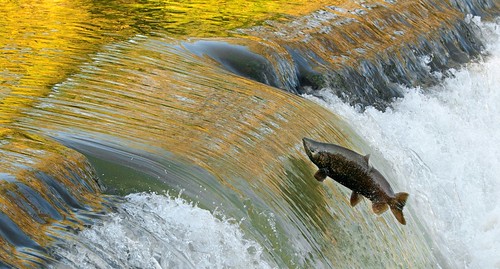


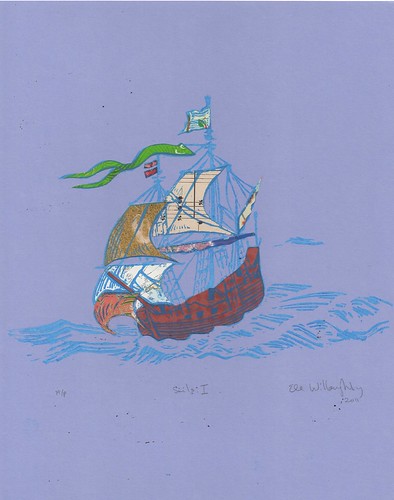
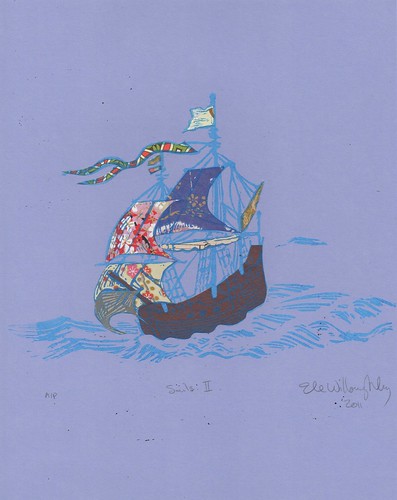
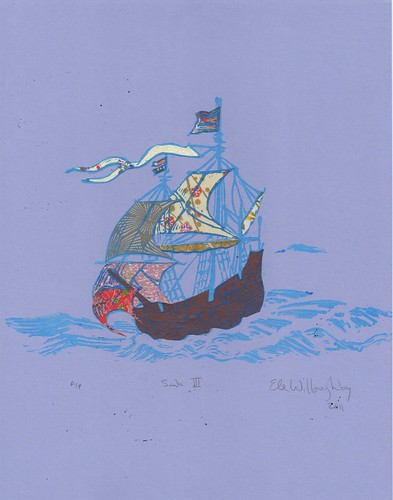
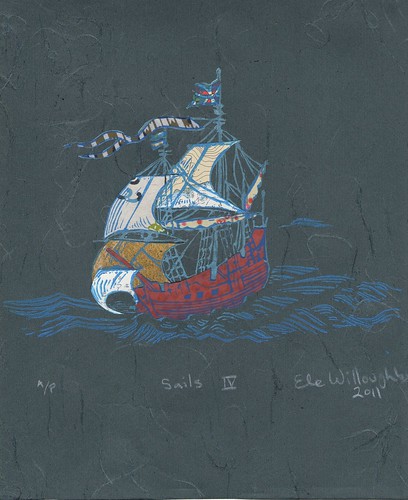
 Ah yes, September. When the nights get cooler and thoughts naturally turn to ... Groundhog Day. That's right. This might seem an unseasonable offering (winter is coming), but, you see, I like Groundhog Day because it's perfectly absurd. Here we are in our allegedly modern country, prognosticating weather by harassing celebrity rodents (Wiarton Willie, Shubenacadie Sam,...). Further, this is Canada. Unless you live in Victoria (and possibly Vancouver), if it's February 2, you don't need a groundhog to tell you there will be 6 more weeks of winter.* If you live south of the border, anywhere near the most famous American prognosticating groundhog, Punxsutawney Phil, the same is true. Shadow or no shadow, winter ain't over on the 2nd of February.
Ah yes, September. When the nights get cooler and thoughts naturally turn to ... Groundhog Day. That's right. This might seem an unseasonable offering (winter is coming), but, you see, I like Groundhog Day because it's perfectly absurd. Here we are in our allegedly modern country, prognosticating weather by harassing celebrity rodents (Wiarton Willie, Shubenacadie Sam,...). Further, this is Canada. Unless you live in Victoria (and possibly Vancouver), if it's February 2, you don't need a groundhog to tell you there will be 6 more weeks of winter.* If you live south of the border, anywhere near the most famous American prognosticating groundhog, Punxsutawney Phil, the same is true. Shadow or no shadow, winter ain't over on the 2nd of February.

